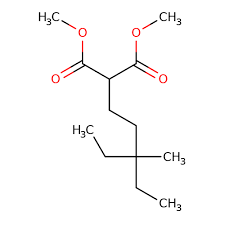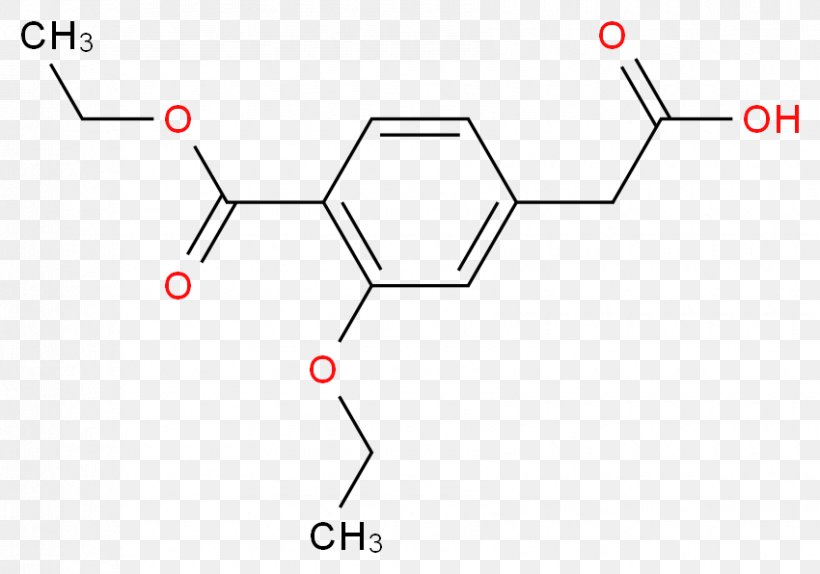In microbiology, culture media play a pivotal role in isolating, identifying, and differentiating various microorganisms. Different types of selective, differential, and enriched media are developed to support the growth of specific bacteria while suppressing others, providing valuable diagnostic information in clinical settings.
Among these, CLED Agar (Cystine Lactose Electrolyte Deficient Agar) holds significant importance, especially in the detection and differentiation of urinary tract infection (UTI) pathogens. It not only promotes the growth of urinary bacteria but also prevents the swarming of Proteus species, which is a common problem in urine culture media.
Table of Contents
Importance of CLED Agar for Urinary Tract Infection (UTI) Diagnostics
Urinary tract infections are among the most frequent bacterial infections affecting individuals of all age groups. Accurate identification and differentiation of uropathogens are essential for appropriate treatment. CLED Agar is uniquely designed for this purpose — offering selective properties while allowing differential identification based on lactose fermentation reactions and colony morphology.
Its ability to inhibit Proteus swarming and simultaneously support a wide range of urinary bacteria makes it a preferred medium in both hospital and clinical microbiology laboratories.
What is CLED Agar?
CLED Agar is a specialized, non-inhibitory, differential medium formulated to support the growth of common urinary tract pathogens while differentiating them based on their lactose fermentation ability. It is particularly valuable for primary isolation from urine samples.
Full Form and Definition
The full form of CLED Agar is Cystine Lactose Electrolyte Deficient Agar. It derives its name from its key components: cystine, lactose, and the deliberate deficiency of electrolytes. The electrolyte deficiency helps prevent swarming of Proteus species, a frequent problem in urine cultures, while lactose and pH indicators allow differentiation between lactose fermenting and non-fermenting bacteria.
Historical Background and Development
CLED Agar was first introduced in the mid-20th century as a modification of electrolyte-containing media, which often permitted swarming by Proteus. Recognizing the diagnostic challenges caused by this, microbiologists developed CLED Agar as a balanced formulation that could prevent swarming, allow the growth of various urinary bacteria, and provide differentiation based on lactose fermentation. Its simplicity and reliability have ensured its continued use in clinical microbiology.
Composition of Cystine Lactose Electrolyte Deficient Agar
The formulation of CLED Agar includes carefully chosen components designed to fulfill specific nutritional and selective requirements. Each ingredient contributes to bacterial growth, differentiation, and the overall performance of the medium.
Core Ingredients and Their Functions
The medium contains essential peptones, carbohydrate sources, pH indicators, and solidifying agents to create a suitable environment for urinary bacteria.
Peptone

Peptone provides a complex mixture of amino acids, peptides, and nitrogenous compounds essential for the growth of most non-fastidious bacteria. It acts as a primary organic nitrogen source.
Tryptone

Similar to peptone, tryptone is a partially digested protein that supplies amino acids and growth factors, enhancing the medium’s ability to support various bacterial species.
Lactose

Lactose serves as the primary fermentable carbohydrate in CLED Agar. It enables the differentiation of organisms based on their ability to ferment lactose, producing acidic by-products that cause a color change in the pH indicator.
L-Cystine
L-Cystine is included to support the growth of Enterococcus species and other nutritionally demanding bacteria found in urinary specimens. It improves the recovery of a broader spectrum of organisms.
Electrolyte Deficiency Purpose
Electrolyte deficiency is a distinguishing feature of CLED Agar. By limiting electrolytes like sodium and chloride, the medium prevents the characteristic swarming behavior of Proteus species, ensuring discrete colony formation for easier identification.
Bromothymol Blue Indicator
This pH indicator changes color in response to acid or alkaline metabolic by-products. In CLED Agar, it appears green at neutral pH, turns yellow in acidic conditions due to lactose fermentation, and blue in alkaline conditions produced by certain non-fermenters.
Agar Base
Agar provides a firm surface for bacterial colonies to develop and allows visual observation of colony characteristics. It is a polysaccharide derived from red algae that remains solid at incubation temperatures.
Commercial Variations in Cystine Lactose Electrolyte Deficient Agar
Some commercial formulations modify CLED Agar by incorporating different pH indicators or additives like Andrade’s indicator to improve visualization of fermentation reactions. Other variants such as CLED-OP (Oxidation-Protection) are formulated for enhanced recovery of oxidizable pathogens or anaerobic uropathogens.
Principle of Cystine Lactose Electrolyte Deficient Agar
The working principle of CLED Agar is based on selective inhibition of Proteus swarming through electrolyte deficiency and the differentiation of bacteria according to lactose fermentation. Its balanced composition allows simultaneous isolation and differentiation of a wide range of urinary pathogens.
How CLED Agar Supports Bacterial Growth
CLED Agar supplies essential nutrients through peptones and tryptone while creating an environment suitable for most urinary tract bacteria. Its electrolyte-deficient formulation ensures that even swarming organisms like Proteus remain restricted to small colonies, making enumeration and identification straightforward.
Role in Preventing Proteus Swarming
Proteus species are notorious for their swarming ability on agar surfaces, which can obscure other colonies. By reducing sodium and other electrolytes, CLED Agar alters the osmotic environment, preventing swarming without affecting the growth of other bacteria. This unique property makes CLED a superior choice for urine cultures.
pH Indicators and Lactose Fermentation Reaction
Bromothymol blue acts as a visual indicator of pH changes in the medium. Lactose fermenters produce acid, turning the medium yellow around colonies, while non-fermenters either produce no color change or turn it bluish due to alkaline by-products. This enables quick visual differentiation between different groups of bacteria.
Preparation of Cystine Lactose Electrolyte Deficient Agar
The proper preparation of CLED Agar is critical to maintaining its selective and differential properties. It involves careful measurement, sterilization, and handling of components to ensure media consistency and reliability.
Required Materials and Chemicals
To prepare CLED Agar, the following are needed: peptone, tryptone, lactose, L-cystine, bromothymol blue, agar, distilled water, and access to an autoclave, measuring instruments, and sterile Petri plates.
Step-by-Step Preparation Method
Media Mixing
All dry ingredients are weighed according to the manufacturer’s guidelines and added to distilled water. The mixture is stirred until the components are completely dissolved.
Sterilization
The prepared medium is sterilized in an autoclave at 121°C for 15 minutes under 15 psi pressure. This ensures the elimination of any contaminating organisms without degrading the medium’s selective properties.
Pouring Plates
After cooling to about 45–50°C, the sterilized medium is poured into sterile Petri dishes under aseptic conditions and allowed to solidify.
Storage and Shelf-life Considerations
Prepared CLED Agar plates should be stored at 2–8°C in sealed containers to prevent desiccation and contamination. The shelf-life typically extends to several weeks if proper storage conditions are maintained.
Inoculation and Incubation Procedures
After the medium has been properly prepared and solidified in sterile Petri dishes, it is ready for inoculation. Proper handling of clinical samples and careful streaking methods are essential for obtaining isolated colonies and reliable results.
CLED Agar is mainly used for primary urine cultures, but it can also be applied to other body fluids when urinary tract infections or related pathogens are suspected.
Sample Types Suitable for Cystine Lactose Electrolyte Deficient Agar
The primary sample type for CLED Agar is freshly voided or catheterized urine, collected in sterile containers. Midstream urine specimens are preferred as they reduce the chances of contamination from normal flora. Occasionally, other specimens like suprapubic aspirates or nephrostomy urine can also be cultured on this medium.
Streaking Methods for Isolated Colonies
The standard streaking technique for CLED Agar involves the quadrant streak or cross-streak method using a sterile loop. This helps dilute the inoculum across the plate, facilitating the development of well-isolated colonies. Isolated colonies allow easier observation of color changes, morphology, and size, which are critical for preliminary identification.
Optimal Incubation Conditions
Once inoculated, the CLED Agar plates are incubated at 35–37°C for 18–24 hours in an aerobic environment. Plates are examined after the incubation period for colony growth, lactose fermentation reactions, and swarming patterns, ensuring timely reporting of UTI pathogens.
Results and Interpretation on Cystine Lactose Electrolyte Deficient Agar
Post-incubation, CLED Agar plates are carefully observed for colony morphology, pigmentation, lactose fermentation reactions, and overall growth patterns. These observations assist in the preliminary identification of urinary tract pathogens.
Colony Morphology of Common Pathogens
Different urinary bacteria display characteristic colony appearances on CLED Agar, often accompanied by specific color changes in the medium.
Escherichia coli
E. coli, a primary cause of UTIs, typically produces yellow, smooth, moist colonies due to acid production from lactose fermentation. The surrounding medium turns yellow because of the drop in pH.
Proteus Species
Proteus colonies appear translucent, pale blue, and non-lactose fermenting. Thanks to the electrolyte-deficient nature of CLED Agar, these bacteria do not swarm, remaining confined to discrete colonies, which simplifies enumeration.
Klebsiella Species
Klebsiella produces large, mucoid, yellow colonies resulting from lactose fermentation. Its distinctive mucoid texture differentiates it from E. coli, despite similar color changes in the medium.
Pseudomonas aeruginosa
P. aeruginosa forms greenish-blue, non-lactose fermenting colonies with potential pigment production, occasionally giving the medium a greenish hue. Colonies often have a characteristic fruity odor.
Enterococcus Species
Enterococcus species grow as small, yellowish colonies due to lactose fermentation, aided by the presence of L-cystine in the medium, which supports their growth.
Color Reactions and pH Changes
The most critical diagnostic feature of CLED Agar is the color shift produced by bacterial metabolism of lactose.
- Lactose fermenters: Turn the medium yellow around their colonies by acidifying the environment.
- Non-fermenters: Leave the medium greenish-blue or may shift it towards blue due to alkaline by-products.
These visual cues guide microbiologists in distinguishing between different groups of bacteria.
Uses of Cystine Lactose Electrolyte Deficient Agar
CLED Agar has remained a mainstay in clinical microbiology due to its versatility, selectivity, and differential capabilities. Its ease of interpretation and prevention of swarming are major advantages in laboratory diagnostics.
Routine Urinary Tract Infection Diagnostics
The primary application of CLED Agar is in routine urine culture diagnostics, enabling the isolation, enumeration, and presumptive identification of urinary tract pathogens.
Differentiation and Enumeration of Uropathogens
CLED Agar allows laboratories to distinguish between lactose fermenting and non-fermenting organisms and suppress Proteus swarming, ensuring accurate colony counts and reliable differentiation of mixed flora.
Application in Clinical and Hospital Laboratories
Hospitals and diagnostic centers routinely use CLED Agar for patient urine culture screening, post-surgical infection monitoring, and research on antimicrobial resistance in urinary pathogens.
Advantages of CLED Agar
The formulation of CLED Agar offers several practical and diagnostic advantages that enhance its reliability and ease of use in clinical microbiology.
Swarming Inhibition of Proteus spp.
A key advantage of CLED Agar is its ability to suppress the swarming behavior of Proteus species, ensuring clear visibility of other bacterial colonies on the plate.
Differential and Selective Medium Properties
CLED Agar combines selective properties, preventing Proteus overgrowth, with differential features that help identify organisms based on lactose fermentation and pH-induced color changes.
Ease of Interpretation
With its simple color reactions and distinct colony morphologies, CLED Agar allows quick, reliable preliminary identification of uropathogens without the need for specialized equipment.
Limitations of Cystine Lactose Electrolyte Deficient Agar
While highly valuable for urinary cultures, CLED Agar has some limitations that restrict its broader diagnostic applications.
Limited Spectrum Beyond Urinary Pathogens
CLED Agar is optimized for the growth of common uropathogens but is less effective for fastidious organisms like Haemophilus, Neisseria, or anaerobic bacteria, which require enriched media.
Not Suitable for Fastidious Organisms
The medium lacks growth factors needed for nutritionally demanding organisms, making it unsuitable for certain pathogens encountered in systemic or respiratory infections.
Modern Modifications and Variants
To enhance its diagnostic utility, several modifications of the basic CLED Agar formulation have been developed, offering improved differentiation and pathogen recovery.
CLED Agar with Andrade’s Indicator
Some variations replace bromothymol blue with Andrade’s indicator, which provides a pink color in acidic conditions, offering a different colorimetric scale for lactose fermentation detection.
CLED-OP Medium for Enhanced Pathogen Detection
CLED-OP is a modified version enriched to support the growth of oxidizable and potentially anaerobic uropathogens, extending its diagnostic range while maintaining Proteus swarming suppression.
Comparison with Other Urine Culture Media
Understanding how CLED Agar compares to other commonly used media highlights its unique advantages and limitations in urine culture diagnostics.
MacConkey Agar vs. CLED Agar
While MacConkey Agar also differentiates lactose fermenters, it permits Proteus swarming and is less suitable for mixed urine cultures. CLED Agar’s ability to prevent swarming and support a broader range of urinary bacteria makes it preferable for primary urine culture.
Blood Agar vs. CLED Agar
Blood Agar is enriched and supports fastidious organisms, but it lacks differential properties for lactose fermentation and permits Proteus swarming. CLED Agar, while not enriched, provides selective and differential advantages, making it ideal for routine UTI diagnostics.
Safety and Handling Guidelines
As with all clinical media, proper handling, inoculation, and disposal procedures must be followed to maintain biosafety and prevent laboratory-acquired infections.
Biosafety Levels for Handling Urine Samples
Urine specimens and CLED Agar plates should be handled in accordance with Biosafety Level 2 (BSL-2) protocols. Personal protective equipment (PPE) such as gloves, lab coats, and eye protection should be worn during specimen processing.
Safe Disposal of Used Media
After use, CLED Agar plates must be autoclaved or treated with appropriate disinfectants before disposal. This ensures the elimination of pathogenic bacteria and prevents environmental contamination.
Conclusion
CLED Agar remains an indispensable medium in clinical microbiology for the isolation and differentiation of urinary tract pathogens. Its ability to inhibit Proteus swarming and visually differentiate lactose fermenters makes it ideal for routine urine culture.
Even as advanced molecular diagnostics evolve, CLED Agar continues to serve as a reliable, cost-effective option for preliminary diagnosis, ensuring rapid and accurate clinical decisions in urinary tract infection management.
Frequently Asked Questions (FAQ)




